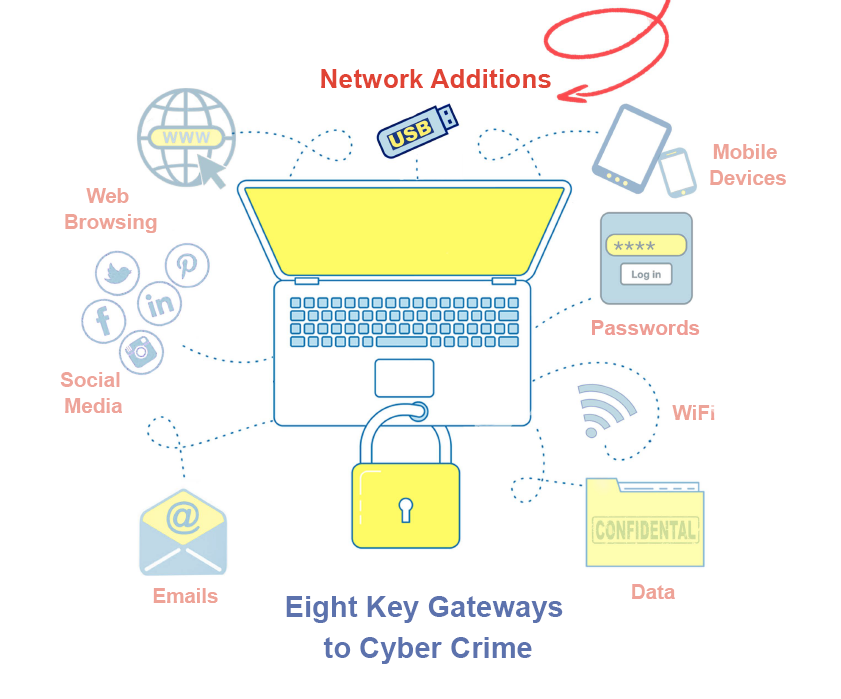This is the seventh in a series of eight articles focusing on practical ways to block key Cyber Crime Gateways.
If you found a USB drive in a parking lot, what would you do? Would you pick it up and plug it into your computer to see who it belongs to and what's on it? Researchers from Google wanted to know how many people would do just that if they littered 297 USB drives around a college campus. Results: 48% of the drives were picked up and plugged into computers. These are frightening results considering how easily a seemingly harmless portable device can trigger a cyberattack. Hackers will use a USB device as an "attack vector" that gives them access to a single computer or network. So what do we learn? Just as with emails, don't open anything you aren't expecting or don't trust. Here are some other security tips to consider when using USBs and other network add-ons.
Check out this article from HackRead which outlines basic best practices for using USBs, including:
- Avoid using unknown flashdrives.
- Encrypt your flash drive.
- Install antivirus software.
- Change settings-such as disabling autoplay and autorun.
- Password-protect your USB.
Downloading unauthorized or pirated software or downloading copyrighted media onto company computers may not only have legal consequences, it can also be an open door for malware to enter networks. This article from The Software Alliance outlines the risks of unlicensed software use and the proper management of software including:
- Developing Policies and Procedures
- Auditing your software
- Determining what is authorized or unauthorized
Bottom line, make it policy within your organization that all employees use ONLY approved software, apps, downloads and mobile storage devices!


